For pet owners, the living room often serves as a battleground where the comfort of our furry friends collides with the integrity of our furniture.
The couch, a centrepiece of relaxation and family gatherings, bears the brunt of this loving but sometimes destructive relationship.
Between muddy paws, sharp claws, and the inevitable shedding, keeping our couches clean and undamaged seems like a Herculean task. Yet, it’s a challenge we willingly accept for the sake of our beloved pets.
The importance of pet-proofing your couch cannot be overstated. Not only does it extend the life of your furniture, ensuring that your investment remains in good condition for years to come, but it also contributes significantly to the comfort and well-being of your pets. A well-protected couch can serve as a cozy spot for your furry friend to lounge without the risk of harm from accidental spills, scratches, or other pet-related wear and tear.
In this blog, we’ll explore a variety of solutions and methods designed to safeguard your couch from the joys and jolts of pet ownership. From selecting the right materials and using protective covers to implementing effective cleaning routines and setting boundaries, we’ll cover all the bases. Whether you’re dealing with a playful puppy, a curious cat, or an elderly pet with special needs, you’ll find practical tips to create a pet-friendly living space that doesn’t sacrifice style or comfort.
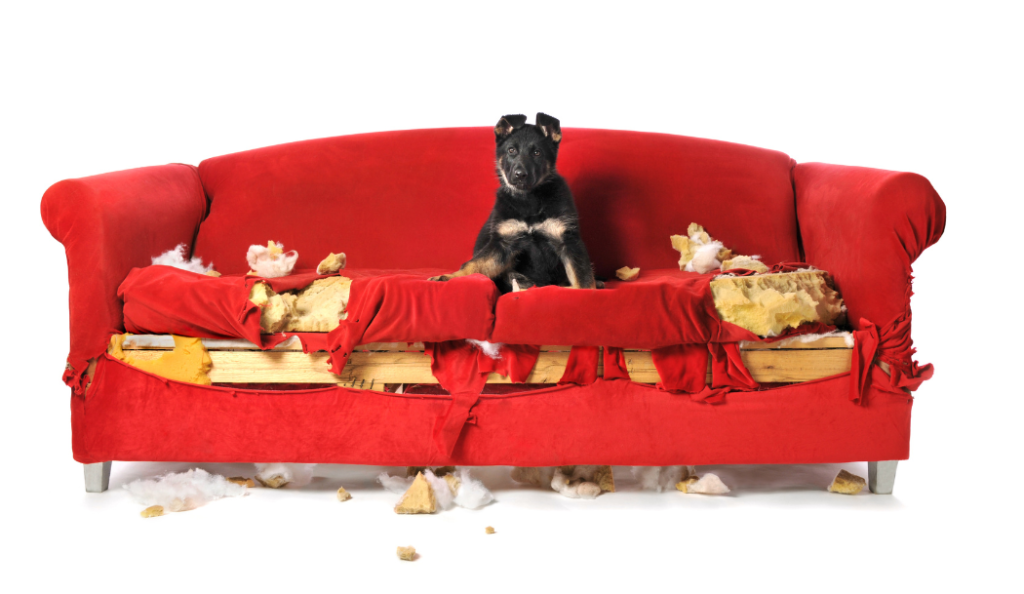
Understanding Your Pet’s Needs and Behaviour
Understanding why pets engage in certain actions such as scratching, shedding, and chewing is the first step towards finding a solution that works for both you and your furry companion.
Scratching is a natural behaviour for cats, and even dogs may occasionally scratch at couches. Cats scratch to mark their territory, maintain their claw health, and stretch their muscles. Dogs might scratch to make a comfortable resting spot or out of anxiety. Shedding is inevitable for most pets, with fur finding its way into every nook and cranny of your couch. Chewing is another common issue, especially in puppies and young dogs, as they explore the world and soothe teething discomfort.
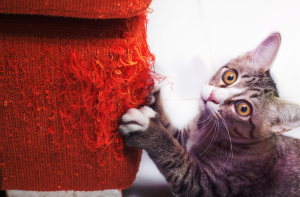
To minimise destructive behaviour, it’s crucial to engage in training and provide appropriate outlets for these natural behaviours:
- For Scratching: Invest in several scratching posts or pads, placing them near the couch or in your pet’s favourite areas. Encourage their use of catnip or toys for cats, and praise or treats for dogs whenever they choose the post over the couch. Double-sided tape on the couch’s arms and corners can deter scratching by making it an unpleasant surface for your pet.
- For Shedding: Regular grooming can significantly reduce the amount of hair that ends up on your couch. Brush your pet frequently to catch loose fur before it spreads. Consider scheduling professional grooming sessions for pets with thick or long coats.
- For Chewing: Provide a variety of chew toys to satisfy your pet’s need to gnaw. Ensure these toys are appealing and appropriate for your pet’s size and chewing habits. Engage in playtime using these toys to reinforce that they are the correct items to chew. If you catch your pet chewing on the couch, redirect them gently to a chew toy and praise them for switching.

Pet-Friendly Couch Materials: A Guide to Durability and Comfort
When it comes to living harmoniously with pets, the choice of couch material plays a pivotal role. Let’s explore the most pet-friendly materials and weigh their pros and cons in terms of pet-proofing your couch.
| MATERIAL | DESCRIPTION | PROS | CONS |
| Microfiber | Often recommended for pet owners, microfiber is a synthetic fabric known for its durability and ease of cleaning. Its tight weave makes it resistant to scratches and reduces the likelihood of pet hair clinging to the surface. Spills can often be wiped away with a damp cloth, and more stubborn stains can be treated with water and mild detergent. | Highly durable, resistant to scratches, and easy to clean. | Some pets may find the texture less appealing, leading them to avoid the couch altogether. |
| Leather | Leather sofa is another excellent choice for pet owners, thanks to its easy-to-clean surface and resistance to odours. Pet hair can easily be brushed off, and claw marks can sometimes add to the natural patina of the leather over time. | Easy maintenance, resistant to odours, and pet hair doesn’t stick. | Can be prone to scratches, and some types of leather may show marks more easily. Expensive to repair or replace. |
| Canvas | For those seeking a more casual look, canvas offers a blend of durability and ease of care. This tightly woven fabric can stand up to a fair amount of abuse, and many canvas couch covers are machine washable for easy cleaning. | Durable, often machine washable, and offers a casual aesthetic. | May not offer the same level of sophistication as other materials and can be less comfortable. |
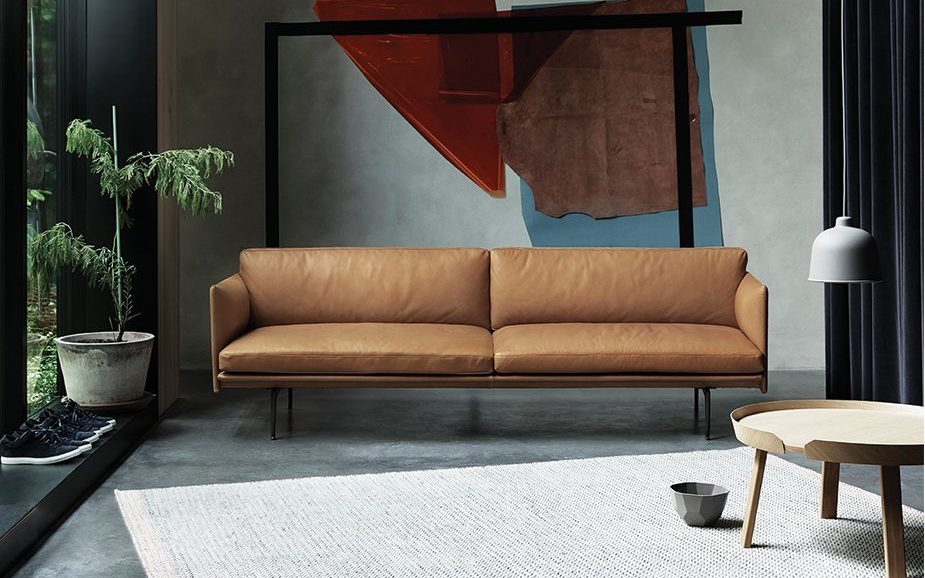
Enhancing Sofa Longevity: The Role of Covers and Throws
When none of these materials seems to be the right fit, or if you’re looking to extend the life of your current couch by using throws and couch covers.
| Product | Description | Pros | Cons |
| Couch Covers | Designed to fit snugly over your couch, these covers offer comprehensive protection against spills, stains, and scratches. Can be easily removed and washed as needed. | Offers full coverage and is easily changeable | May shift with use, requiring regular adjustment. |
| Throws | A more flexible option, throws can be draped over areas most frequented by your pets. They provide a barrier between your pet and the couch fabric and can be easily lifted for cleaning. | Versatile, easy to clean, and can add a decorative touch. | Offers less coverage and may not stay in place. |
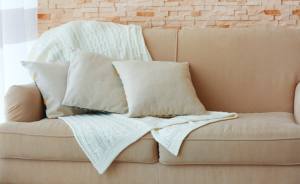
In summary, choosing the right material for your couch involves balancing durability and ease of cleaning with comfort and style.
Essential Couch Cleaning and Maintenance Tips for Pet-Friendly Homes
Maintaining a clean and fresh-smelling couch in a pet-friendly home requires regular effort and the right tools. Pets can bring a lot of joy into a home, but they also bring fur, dirt, and the occasional accident. Here are effective strategies and advice for keeping your couch in top condition.
- Vacuuming: Use a vacuum cleaner with a pet hair attachment to remove fur and dander from your couch. Regular vacuuming, at least once a week, can significantly reduce pet hair buildup. For best results, use a vacuum with a HEPA filter to capture allergens.
- Lint Rollers: For quick touch-ups between vacuuming sessions, lint rollers are highly effective at picking up pet hair from fabric surfaces. Keep one handy for daily use.
- Fabric Cleaners: Invest in a good quality fabric cleaner suitable for your couch material. Test any cleaner on a small, inconspicuous area before applying it to visible parts of the couch to ensure it doesn’t discolour the fabric.
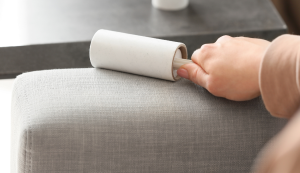
Maintaining a clean couch in a pet-friendly home doesn’t have to be a daunting task. With regular cleaning, prompt attention to spills and accidents, and the right pet-safe products, you can keep your living space welcoming and comfortable for everyone.
Training Your Pets: Establishing Boundaries for a Harmonious Home
Establishing clear boundaries and training your pets to respect them is crucial in maintaining the integrity of your furniture while ensuring your furry friends have their comfortable spots. Here’s how to approach setting boundaries and training your pets effectively.
| Tips | Description |
| Start Early | Begin training as soon as your pet comes home. Early training helps establish rules and routines. |
| Use Commands | Teach your pet a firm but gentle command like “off” or “no couch” to discourage them from jumping on the furniture. Consistency in the commands used is key. |
| Provide Alternatives | Make sure your pet has a comfortable spot of their own, such as a pet bed or a designated area with their favourite toys and blankets. This gives them a clear alternative to the couch. |
| Reward Good Behaviour | Use treats, praise, or playtime to reward your pet when they use their own space instead of the couch. Positive reinforcement strengthens the desired behaviour. |
| Be Consistent | All household members should enforce the same rules regarding the couch. Inconsistency can confuse your pet and undermine the training process. |
By implementing these strategies, you can successfully train your pet to respect the boundaries you set, protecting your couch and other furniture from damage. Training, combined with providing appealing alternatives, ensures that both you and your pets can enjoy a comfortable, harmonious home.
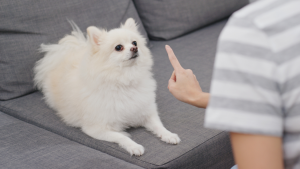
Innovative Solutions and Products for Cleaning Couch
In the quest to maintain a pristine home environment while accommodating our furry friends, innovative solutions and products play a pivotal role. The market has responded to the needs of pet owners with a range of options designed to protect furniture and make pet care easier.
| Product | Description |
| Waterproof Couch Covers | protect the couch from spills, drool, and accidents, which are common issues for pet owners. They help in keeping the couch dry and clean, ensuring that accidents don’t lead to permanent stains or damage. |
| Anti-Scratch Tape | is designed to protect furniture from pet scratches. By deterring pets from scratching the couch, it helps preserve the fabric or leather, maintaining the couch’s appearance and integrity. |
| Pet Repellent Mats | prevent pets from climbing onto the couch by emitting a mild static pulse. This helps keep the couch free from fur, dirt, and wear that pets can bring when they jump on and off the furniture. |
| Automatic Vacuum Cleaners | aid in the overall cleanliness of the home, including the couch area, by picking up pet hair, dander, and dirt regularly. Though not directly applied to the couch, they contribute significantly to reducing the amount of pet hair and allergens that might otherwise end up on the furniture. |
| Citrus Sprays | are used as a natural deterrent to keep pets away from the couch. Since many pets dislike the smell of citrus, these sprays can prevent pets from lounging on or near the couch, thus maintaining its cleanliness. |
| Double-Sided Tape | like anti-scratch tape, can also deter pets from the furniture due to its sticky texture. It’s another method of keeping pets off the couch, thereby protecting the couch fabric from fur, scratches, and general wear. |

Achieving a Pet-Friendly, Stylish Living Space
Throughout this guide, we’ve explored a range of strategies and products designed to protect your couch from the joys and challenges of pet ownership. From choosing the right materials and employing protective covers to regular cleaning and setting boundaries, each measure contributes to a harmonious living space that accommodates the needs of both you and your pets.
Creating a balance between maintaining a stylish, clean couch and ensuring your pet’s comfort and happiness is achievable with the right approach and tools. We encourage pet owners to implement these strategies, embracing innovation and consistency in pet-proofing efforts. Together, we can achieve a pet-friendly home that doesn’t compromise on style or comfort.

Frequently Asked Questions
Yes, cats generally dislike the scents of citrus, lavender, peppermint, and eucalyptus. These can be used in moderation to deter cats from certain areas without harming them.
While Scotchgard is mainly used for repelling liquids and preventing stains, it does not significantly protect against pet hair. Regular grooming and cleaning are more effective for hair control.
No, microfiber is known for its resistance to pet hair sticking. Its tight weave allows for easy hair removal with a simple wipe-down or vacuuming.
Similar to its use with cats, vinegar’s strong smell can act as a deterrent for dogs. However, its efficacy varies and it may not be suitable for all furniture types.
Choosing materials like leather or tightly woven fabrics such as microfiber can help, as pet hair is less likely to stick to these surfaces. Regular cleaning with lint rollers or vacuum cleaners designed for pet hair also helps maintain a hair-free couch.

